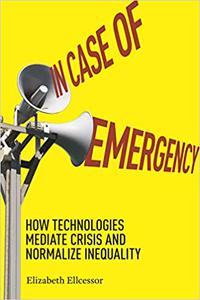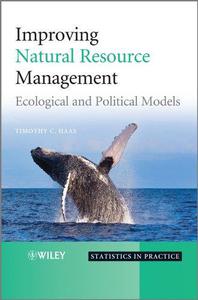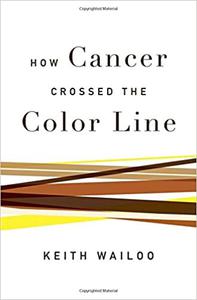Indentured Servitude Unfree Labour and Citizenship in the British Colonies

Anna Suranyi, "Indentured Servitude: Unfree Labour and Citizenship in the British Colonies"
English | 2021 | ISBN: 0228006686, 0228006678 | 288 pages | EPUB | 8.1 MB
Hundreds of thousands of British and Irish men, women, and children crossed the Atlantic during the seventeenth century as indentured servants. Many had agreed to serve for four years, but large numbers had been trafficked or "spirited away" or were sent forcibly by government agencies as criminals, political rebels, or destitute vagrants. In Indentured Servitude Anna Suranyi provides new insight into the lives of these people. The British government, Suranyi argues, profited by supplying labour for the colonies, removing unwanted populations, and reducing incarceration costs within Britain. In addition, it was believed that indigents, especially destitute children, benefited morally from being placed in indenture. Capitalist entrepreneurs who were influential at the highest levels of government made their fortunes from Atlantic trade in goods, indentured servants, and slaves, and their participation in the servant trade contributed to the commercialization of criminal justice. Suranyi breaks new ground in showing how indentured servitude was challenged: once in the colonies, indentured servants adapted resourcefully to their circumstances and rebelled against unfair conditions and abuse by suing their masters, by running away, or through outright revolt. Emerging ideas about race and citizenship led to vehement public debate about the conditions of indentured servants and the ethics of indenture itself, prompting legislation that aimed to curb the worst excesses while slavery continued to expand unchecked.


![S.T.A.L.K.E.R. 2 / STALKER 2: Heart of Chornobyl - Ultimate Edition (2024) [+UPDATE 23.12.2024 - v1.1.3] ElAmigos / Polska wersja językowa](https://i.postimg.cc/Zqd8RWGY/UZG8PBE.jpg)



















































![David Gilmour - Luck and Strange (2024) [FLAC]](https://i.imgur.com/everaBc.jpeg)
![Męskie Granie Orkiestra - Męskie Granie 2024 (2024) [FLAC]](https://i.imgur.com/FAyOxrM.jpeg)
![The Rolling Stones - Hackney Diamonds (2023) [FLAC]](https://i.imgur.com/wCkyyUN.jpg)
![Lady Gaga - Harlequin (2024) [FLAC]](https://i.imgur.com/dcgIA8D.jpeg)
![Natalia Kukulska - Dobrostan (2024) [FLAC]](https://i.imgur.com/bdljG3O.jpeg)
![Kaśka Sochacka - Ta druga (2024) [FLAC]](https://i.imgur.com/hORQKvn.jpeg)
![Kuba Sienkiewicz - Pani Bóg (2024) [FLAC]](https://i.imgur.com/qijCx8Z.jpeg)
![Lanberry - Heca (2024) [FLAC]](https://i.imgur.com/8P7QfeR.jpeg)
![Sara James - PLAYHOUSE (2024) [FLAC]](https://i.imgur.com/m4f8OKg.jpeg)
![Grzegorz Hyży - EPILOG (2024) [FLAC]](https://i.imgur.com/8DA2sBr.jpeg)
![Myslovitz - WIECZORAMI CHŁOPCY WYCHODZĄ NA ULICE (2024) [FLAC]](https://i.imgur.com/l9mMtIG.jpeg)
![Krzysztof Zalewski - ZGŁOWY (2024) [FLAC]](https://i.imgur.com/vh48RAc.jpeg)
![Krzysztof Cugowski - Wiek to tylko liczba (2024) [FLAC]](https://i.imgur.com/SBzgqe2.jpeg)
![Nosowska - Kasia i Błażej (2024) [FLAC]](https://i.imgur.com/mObvVXQ.jpeg)
![sanah - Pianinkowe Kaprysy (2024) [FLAC]](https://i.imgur.com/pVjjPAa.jpeg)
![Kwiat Jabłoni - Pokaz slajdów (2023) [FLAC]](https://i.imgur.com/diERHfZ.jpg)
![Robert Cichy - Spacer po Warszawie (2024) [FLAC]](https://i.imgur.com/ixleU9o.jpeg)
![Viki Gabor - Terminal 3 (2024) [FLAC]](https://i.imgur.com/Q1KCnDs.jpeg)
![Sanah - Kaprysy (2024) [FLAC]](https://i.imgur.com/71OZm4h.jpeg)
![Męskie Granie Orkiestra - Męskie Granie 2023 (2023) [FLAC]](https://i.imgur.com/U4YHo8d.jpg)




